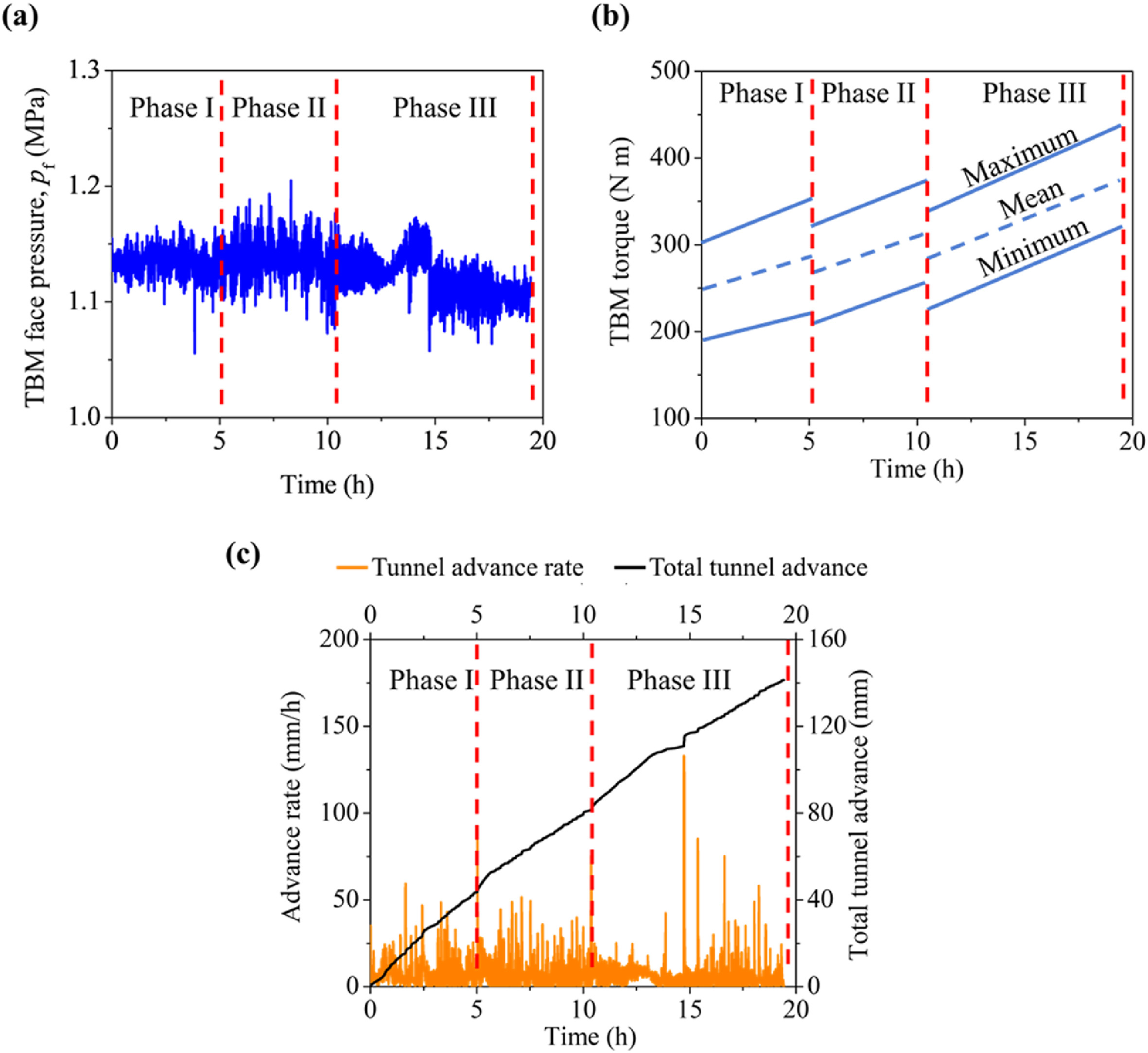JRMGE / Vol 14 / Issue 1
Physical model simulation of rock-support interaction for the tunnel in squeezing ground
Ketan Arora, Marte Gutierrez, Ahmadreza Hedayat
Show More
Civil and Environmental Engineering, Colorado School of Mines, Golden, CO, 80401, USA
2022, 14(1): 82-92. doi:10.1016/j.jrmge.2021.08.016
Received: 2020-11-09 / Revised: 2021-07-05 / Accepted: 2021-08-19 / Available online: 2021-12-01
2022, 14(1): 82-92.
doi:10.1016/j.jrmge.2021.08.016
Received: 2020-11-09
Revised: 2021-07-05
Accepted: 2021-08-19
Available online: 2021-12-01
The existence of squeezing ground conditions can lead to significant challenges in designing an adequate support system for tunnels. Numerous empirical, observational and analytical methods have been suggested over the years to design support systems in squeezing ground conditions, but all of them have some limitations. In this study, a novel experimental setup having physical model for simulating the tunnel boring machine (TBM) excavation and support installation process in squeezing clay-rich rocks is developed. The observations are made to understand better the interaction between the support and the squeezing ground. The physical model included a large true-triaxial cell, a miniature TBM, laboratory-prepared synthetic test specimen with properties similar to natural mudstone, and an instrumented cylindrical aluminum support system. Experiments were conducted at realistic in situ stress levels to study the time-dependent three-dimensional tunnel support convergence. The tunnel was excavated using the miniature TBM in the cubical rock specimen loaded in the true-triaxial cell, after which the support was installed. The confining stress was then increased in stages to values greater than the rock's unconfined compressive strength. A model for the time-dependent longitudinal displacement profile (LDP) for the supported tunnel was proposed using the tunnel convergence measurements at different times and stress levels. The LDP formulation was then compared with the unsupported model to calculate the squeezing amount carried by the support. The increase in thrust in the support was back-calculated from an analytical solution with the assumption of linear elastic support. Based on the test results and case studies, a recommendation to optimize the support requirement for tunnels in squeezing ground is proposed.
Keywords: Squeezing ground, Tunnel support system, Longitudinal displacement profile, Rock-support interaction
Article Data
Author(s) Information
Ketan Arora

Dr. Ketan Arora is currently working as a Tunnel Engineer for Aldea Services Inc. and adjunct faculty at Colorado School of Mines. Prior to this, Dr. Arora has worked as a Post-Doctoral Researcher in the Department of Civil and Environmental Engineering at the Colorado School of Mines. He received his PhD in 2020 from Colorado School of Mines, MTech with specialization in Rock Engineering and Underground Structures from IIT Delhi in 2016, and BTech in Civil Engineering from NIT Surat in 2014. Dr. Arora's teaching and research interests focus on Experimental Geomechanics, Geomaterials Characterization, Rock Mechanics, Instrumentation and Monitoring, and Underground Construction. Dr. Arora's research aims at addressing some of the fundamental issues of geotechnical engineering as applied to tunnels and underground structures through laboratory tests. In the last six years, Dr. Arora has advanced the knowledge of rocks' engineering behavior and their applications in underground structures such as tunnels. Dr. Arora has experience conducting conventional laboratory tests on the rock specimen and designing a novel test method.

